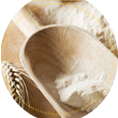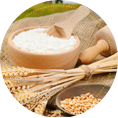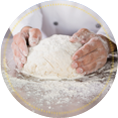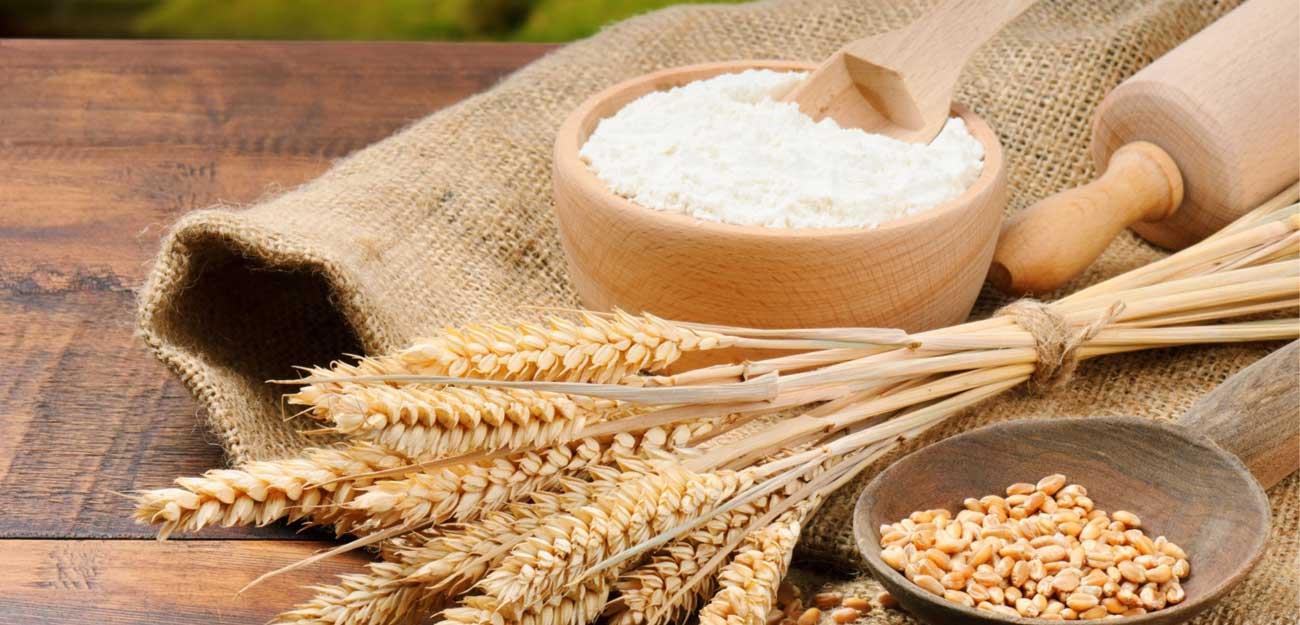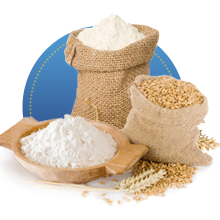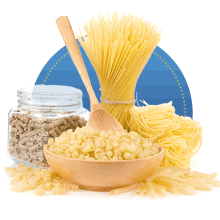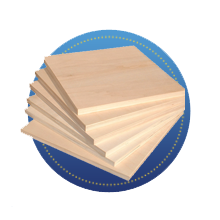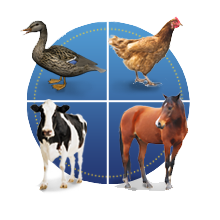Wheat flour is the main product of PT.Indofood Sukses Makmur Tbk. Bogasari Division, along with other products – pasta, premix flour, and by-product of milling process such as bran and pollard that is used as fodder (animal feed), as well as industrial flour for plywood industry.
Wheat was first found in Middle East before 9600 DC and was the first seed cultivated collectively by Human kind. With the growth and expansion of human population, wheat developed as staple food all around the world, thus created a wide variety and species of wheat that are cultivated right now.
Food based on Wheat Flour have become major staple food in many countries, and even in Indonesia, varieties of such food are plenty. High in nutrition, easy and practical to use, high in availability, as well as competitive price make food based on wheat flour reach become widespread in many countries.
In general, wheat can be classified in hard wheat, soft wheat and durum wheat. These types of wheat determine the protein content in the flour.
Wheat flour is the result from milling the seed of wheat. Apart from carbohydrates, wheat flour contains protein in the form of gluten. The gluten content differentiates wheat from other cereal flours. Gluten has chewiness and elastic character which determines the quality of the food it creates. The higher the protein, the higher the gluten content in the flour. The amount of gluten is heavily dependent on the types of wheat.
The protein content is a very important consideration in choosing wheat flour, since it greatly affects the quality of the end product. For example, to make bread and noodle, you will need flour that have high protein content (12%-14%), whereas to make biscuit, pastry/pie and donut, you will need a flour with medium protein (10.5%- 11.5%). Low protein flour (8%-9%) is suitable to make fried food, cookies and many more. For pasta, you will need a special type of wheat – durum wheat.
Flour quality parameters
The quality of flour is affected by moisture, ash, and other physical parameters such as water absorption, development time, stability, and many others.
Moisture
Flour moisture level determines flour storability, higher content (than the standard value) will reduce the shelf life of flour.
Ash
Ash content affects colour and dough stability. High quality flour has low ash content.
Water Absorption
In flour quality parameters, water absorption is defined as the ability of flour to absorb water. It is reduced in humid area or poor storage condition. Water absorption affects quality of end-product, eg. in bread making, it is preferable to have flour that can absorb large amount of water, since it determines dough yield and bread shelf life. Noodle and pasta, water absorption has less influence…
Developing Time
Developing time for flour is defined as time taken for the dough to achieve fully kneaded condition. If the dough is not mixed/kneaded adequately (undermixing), the resulted bread does not spring up in the oven, it will be flat and too chewy, with rough and dense crumb texture, sour aroma, and hard and thick crust.
If the dough is mixed too long (overmixing), the resulted bread will be flat and less elastic, with dense, dry and very crumbly crumb, lighter crust colour.



